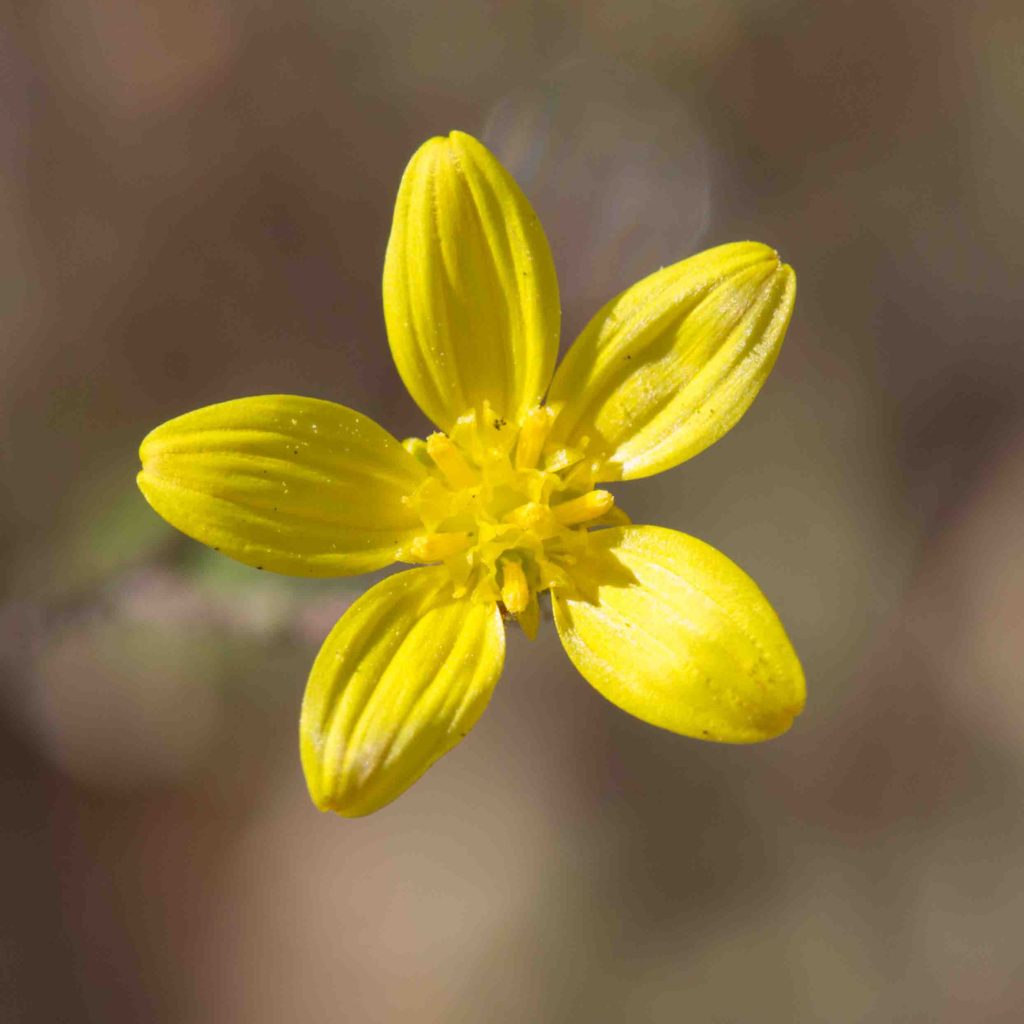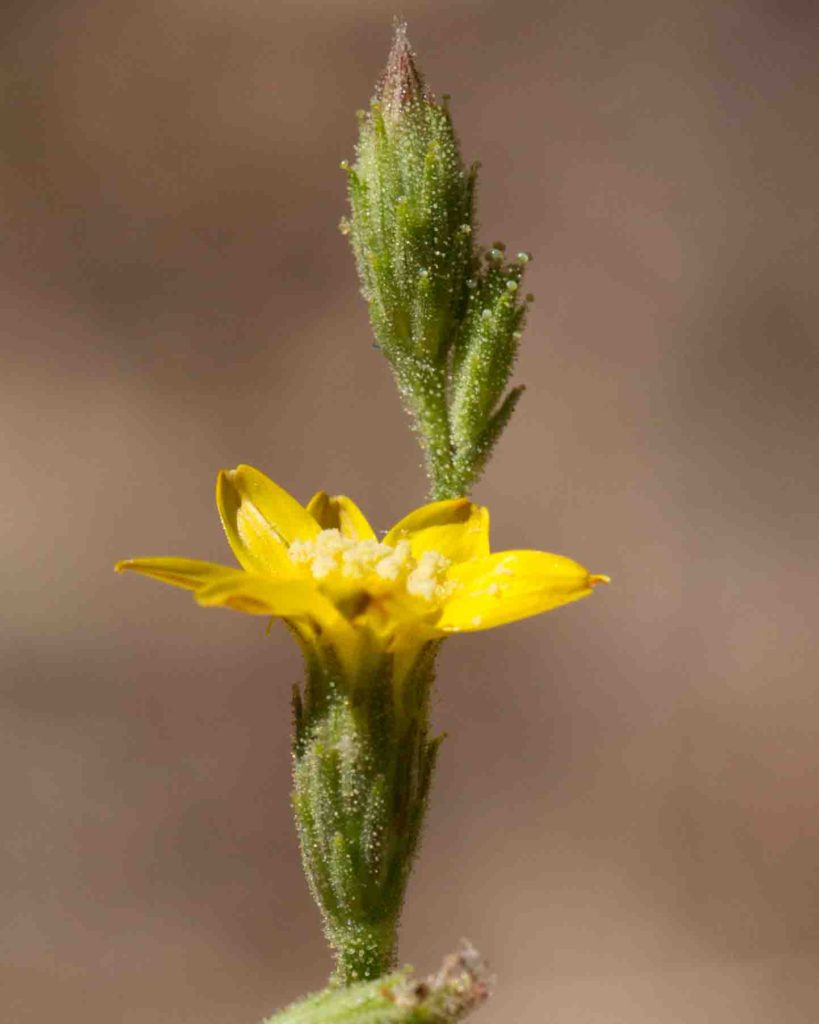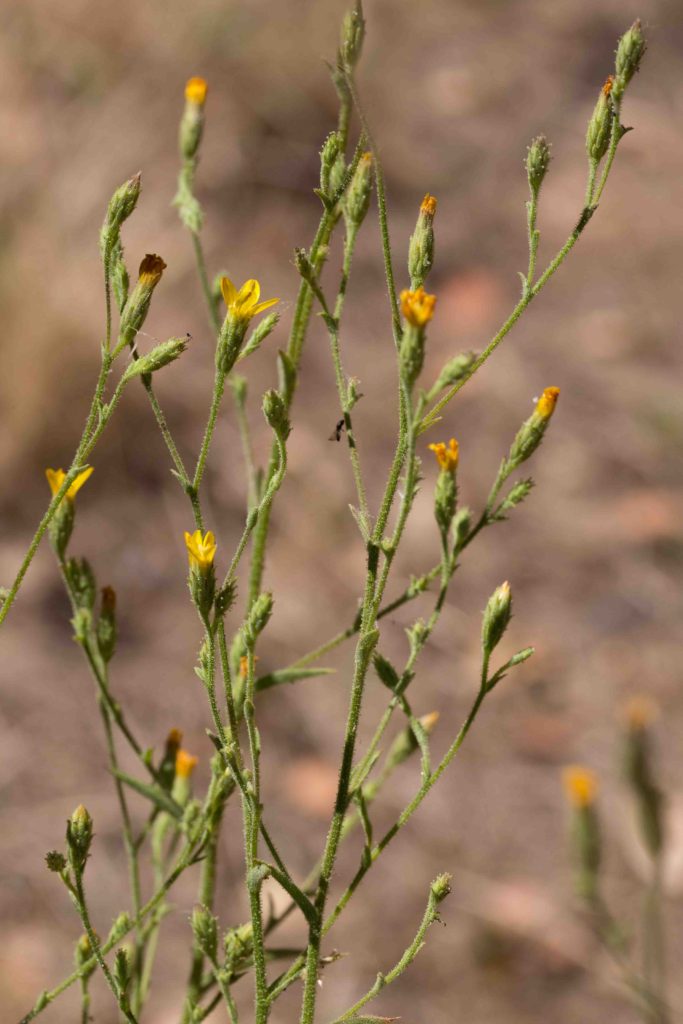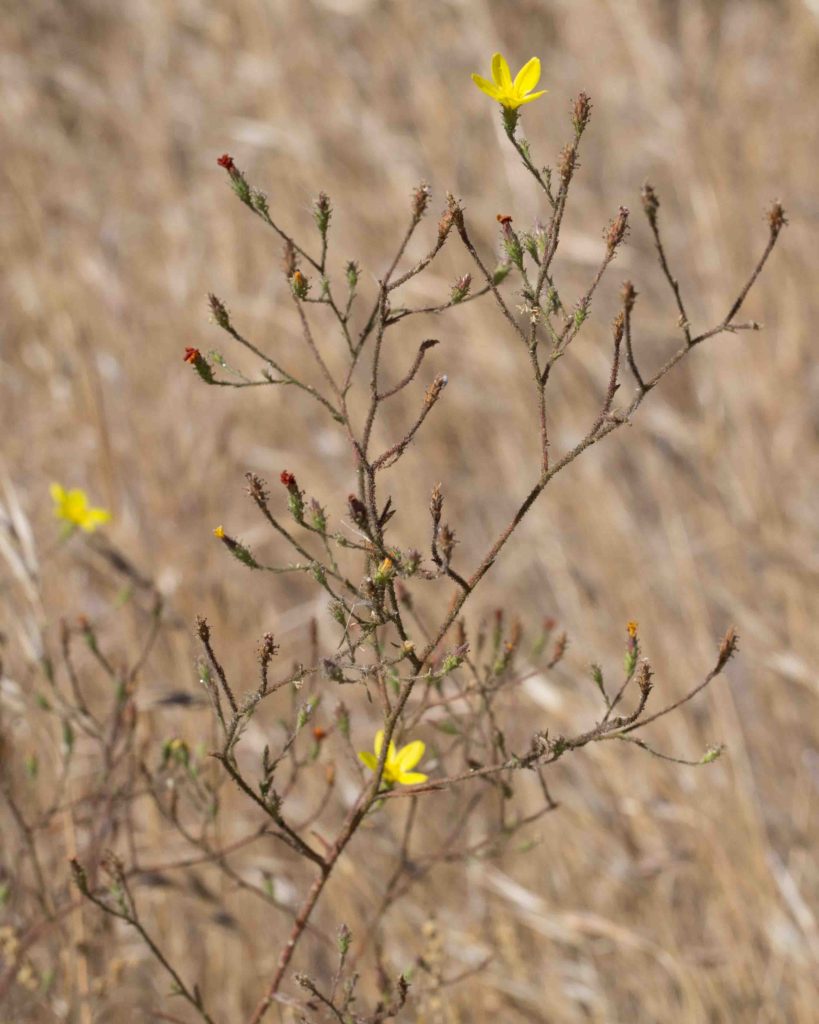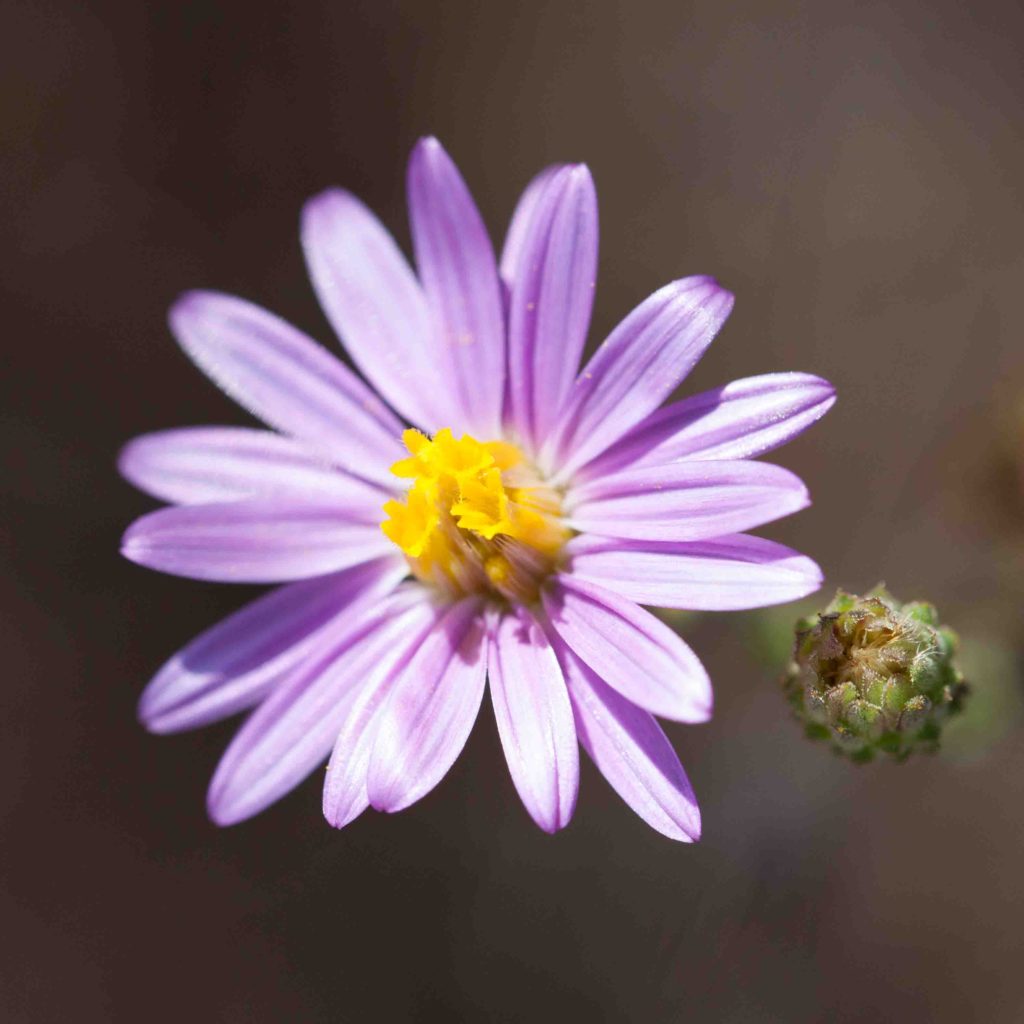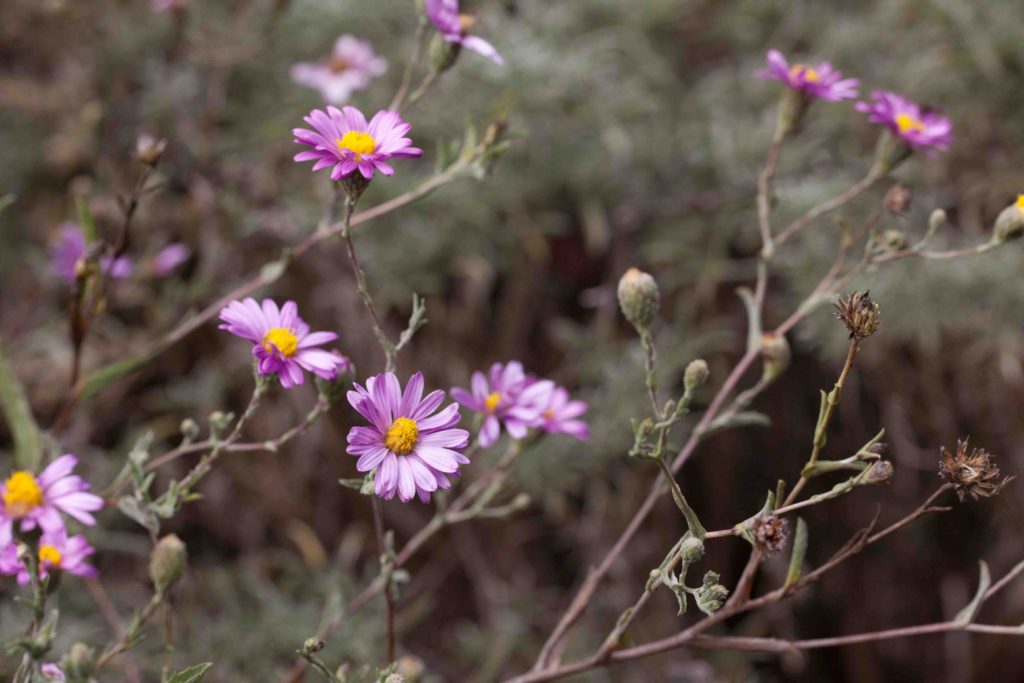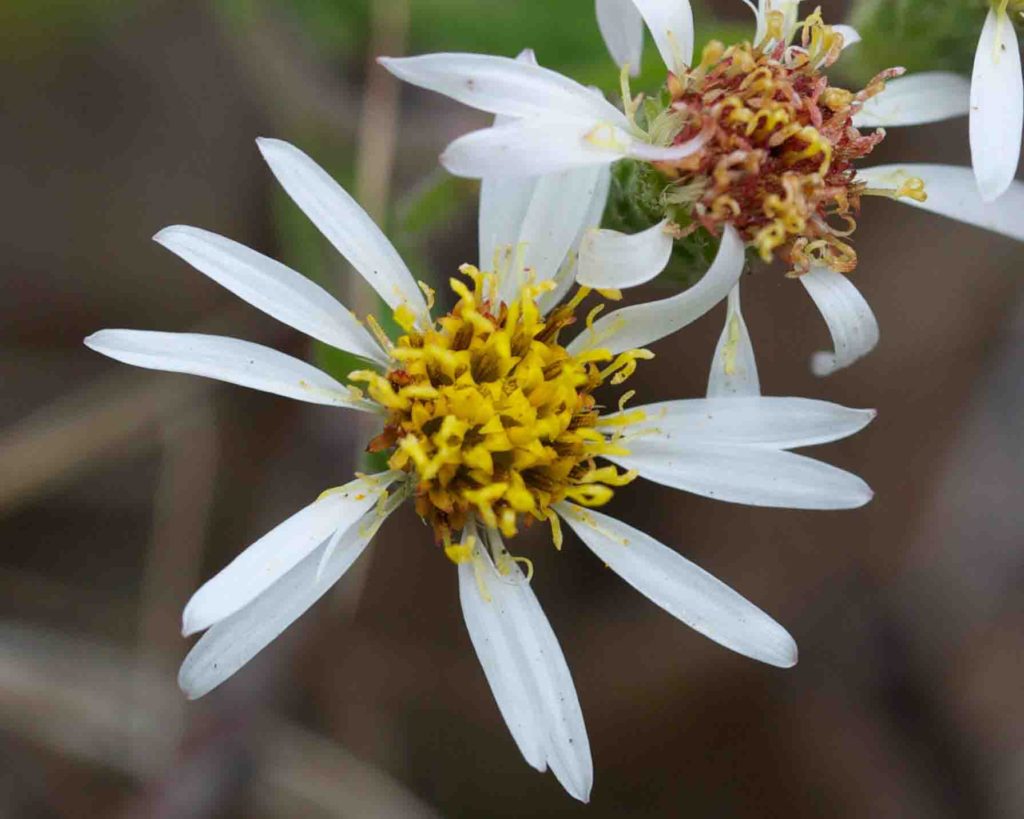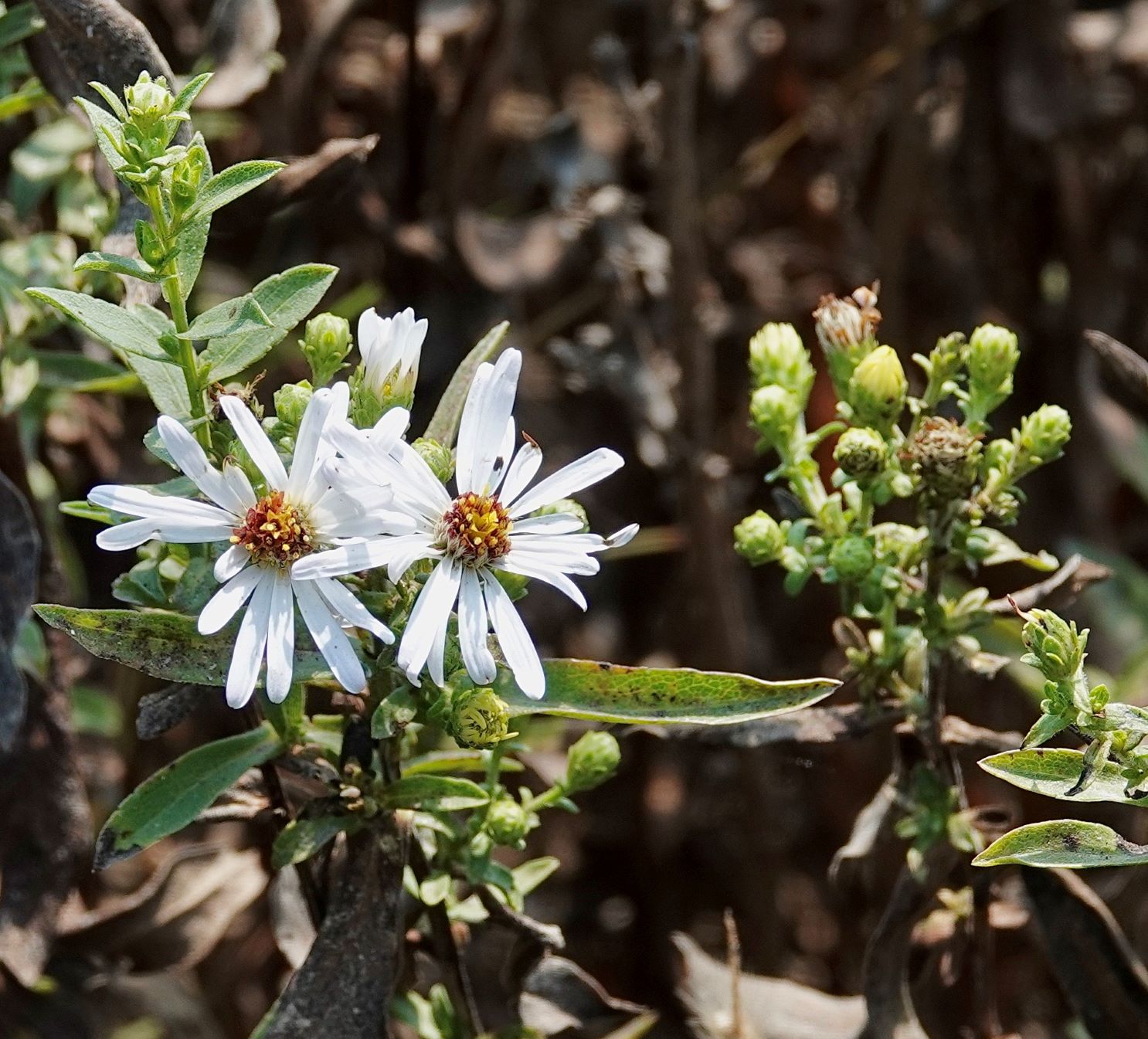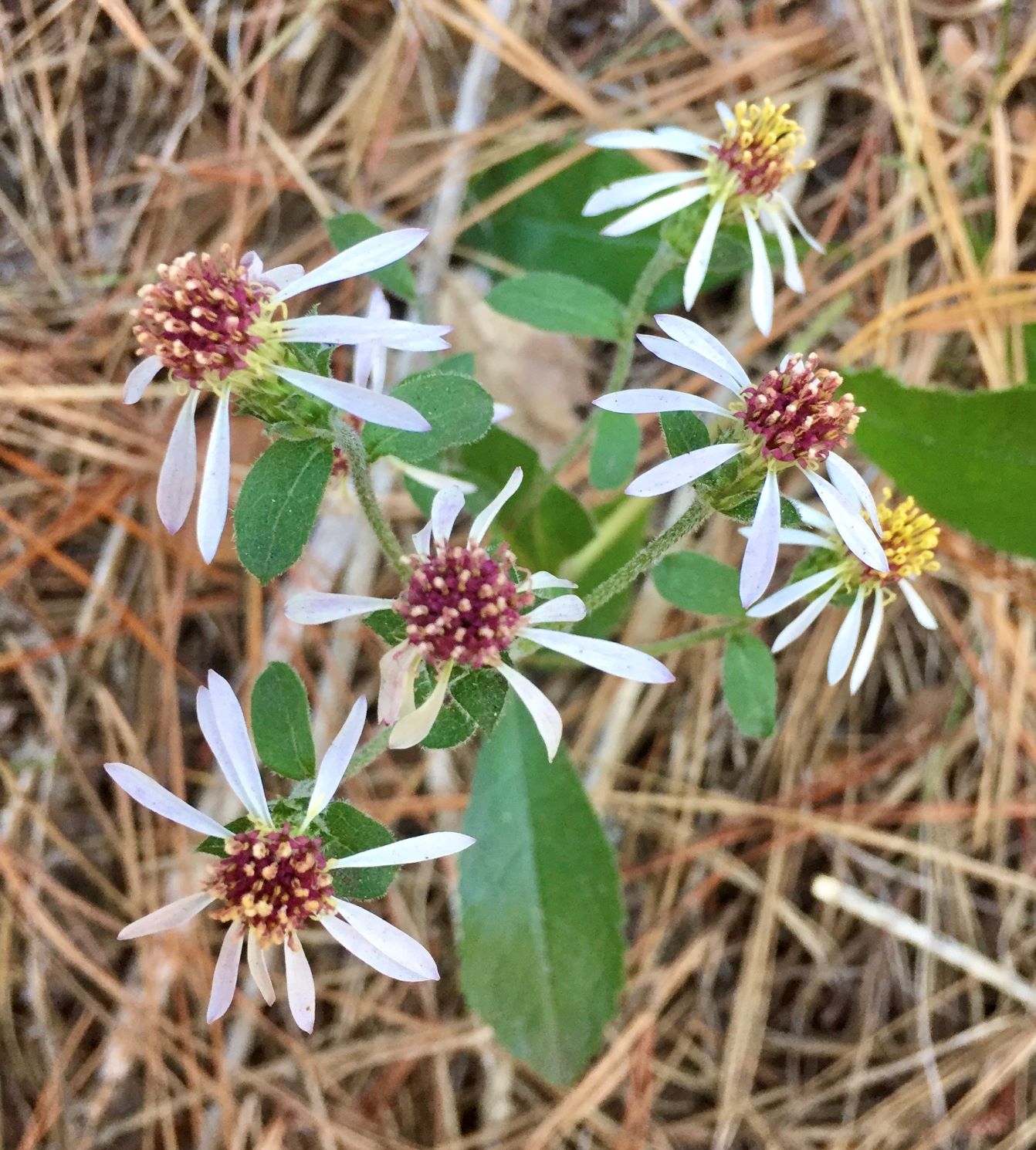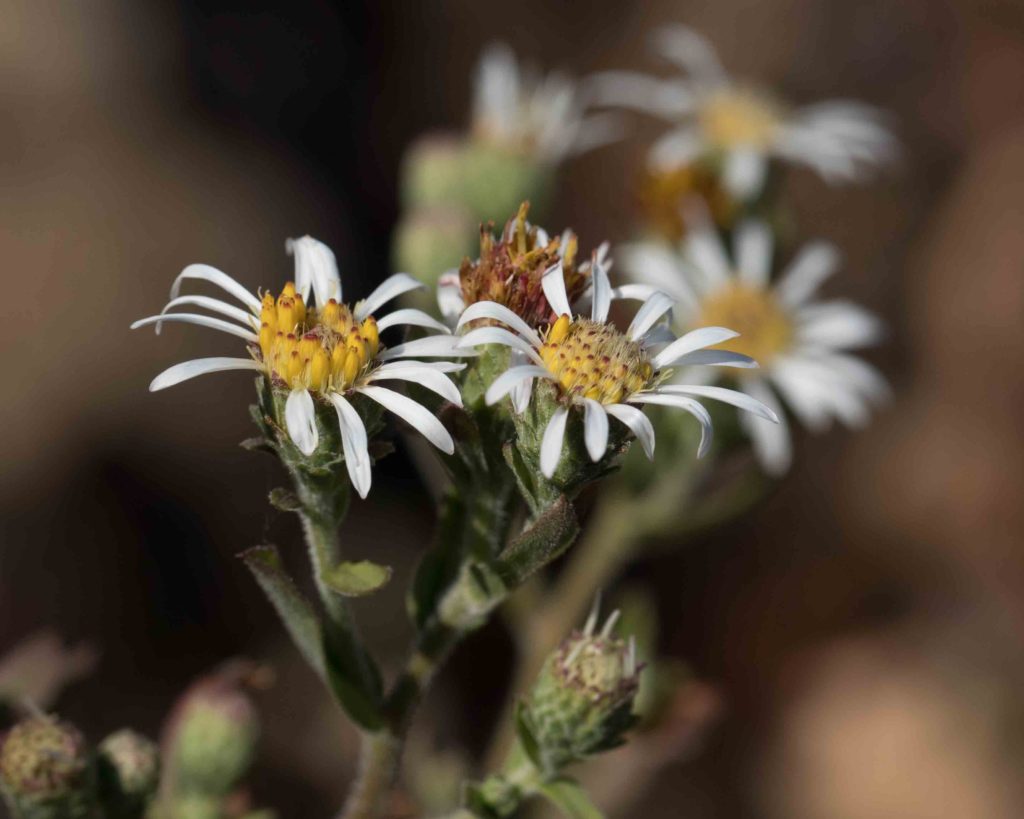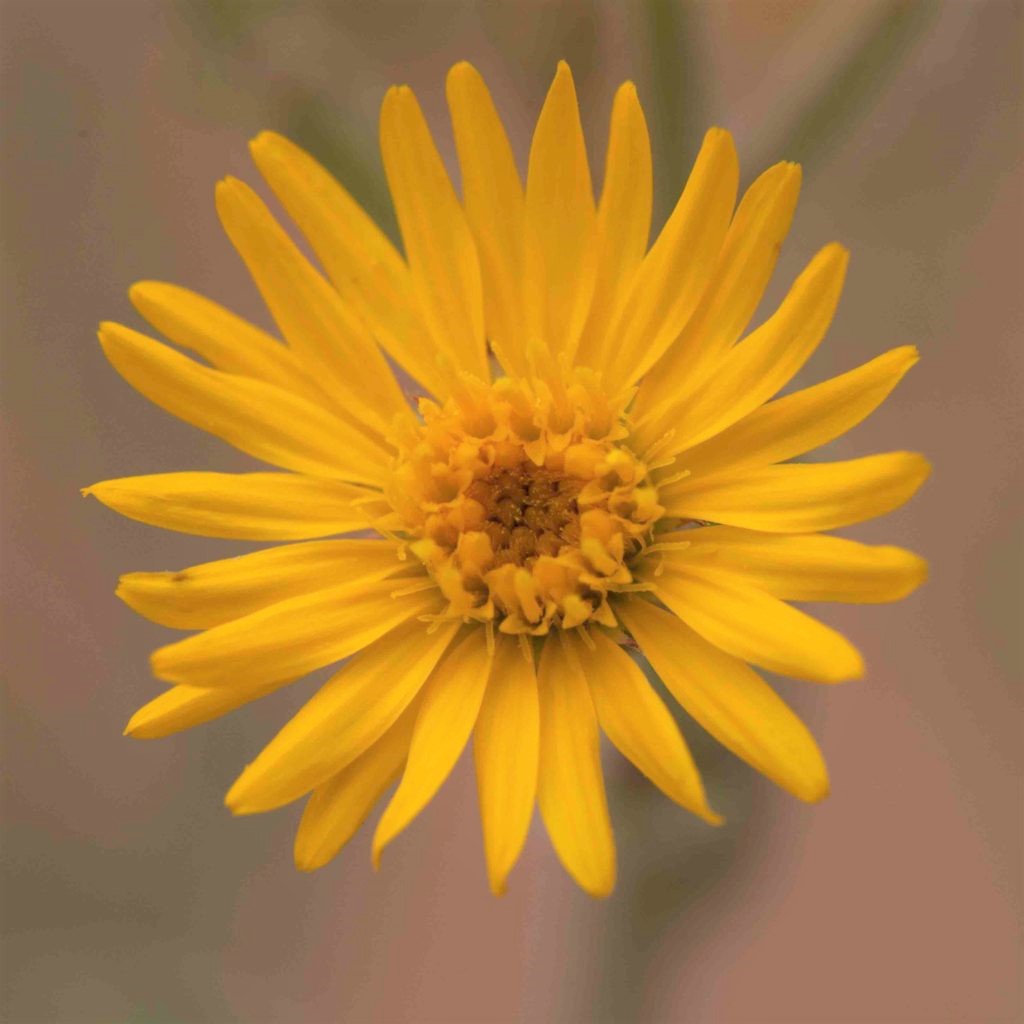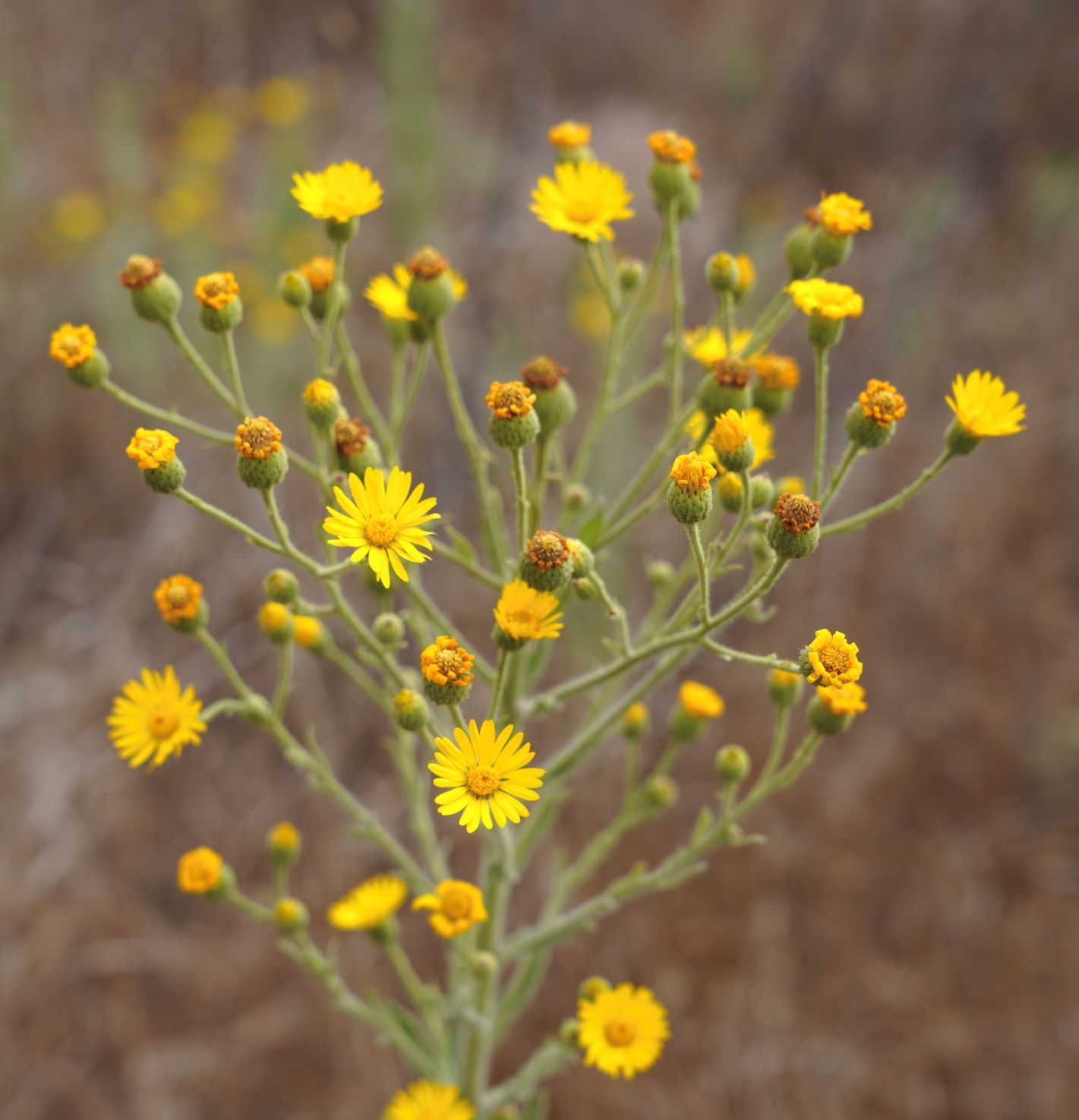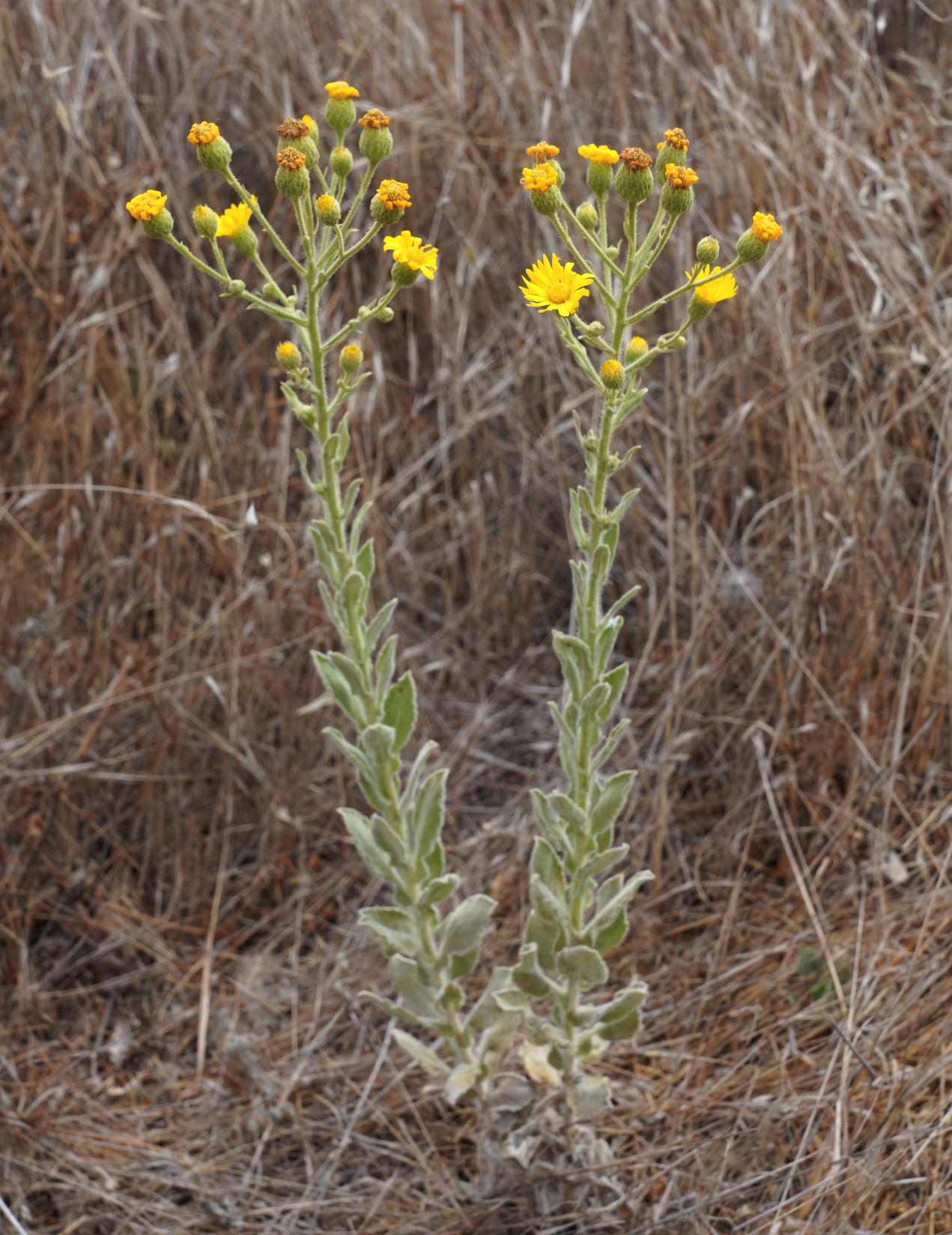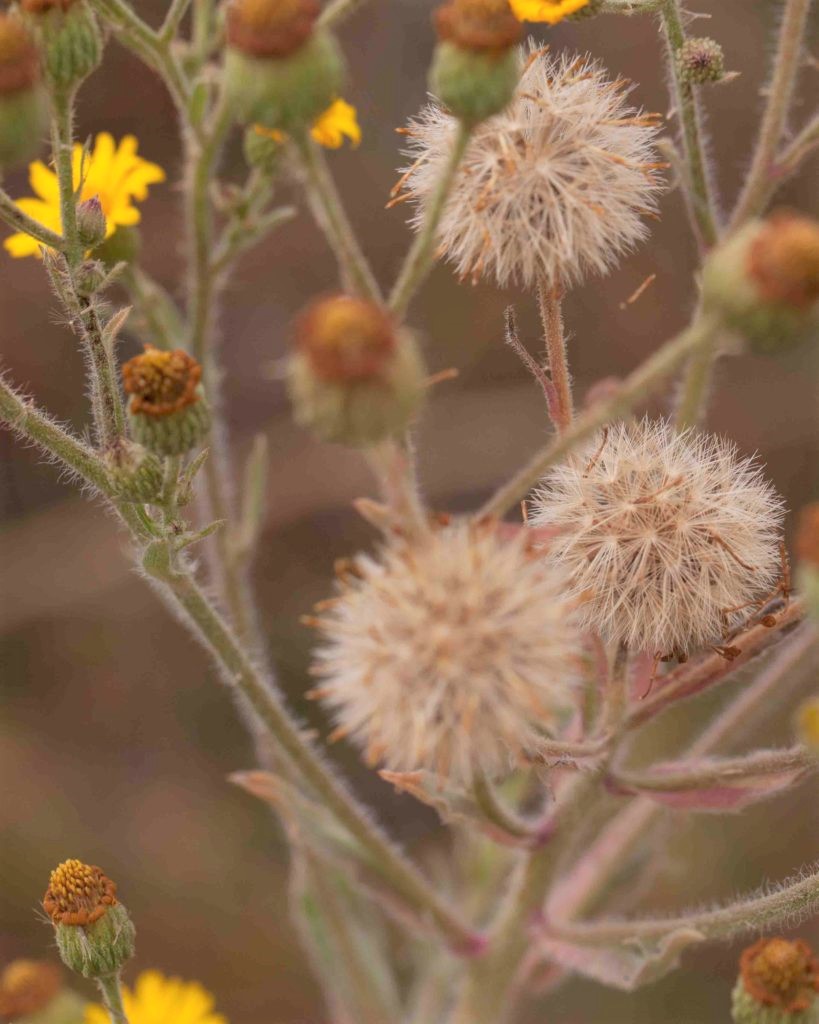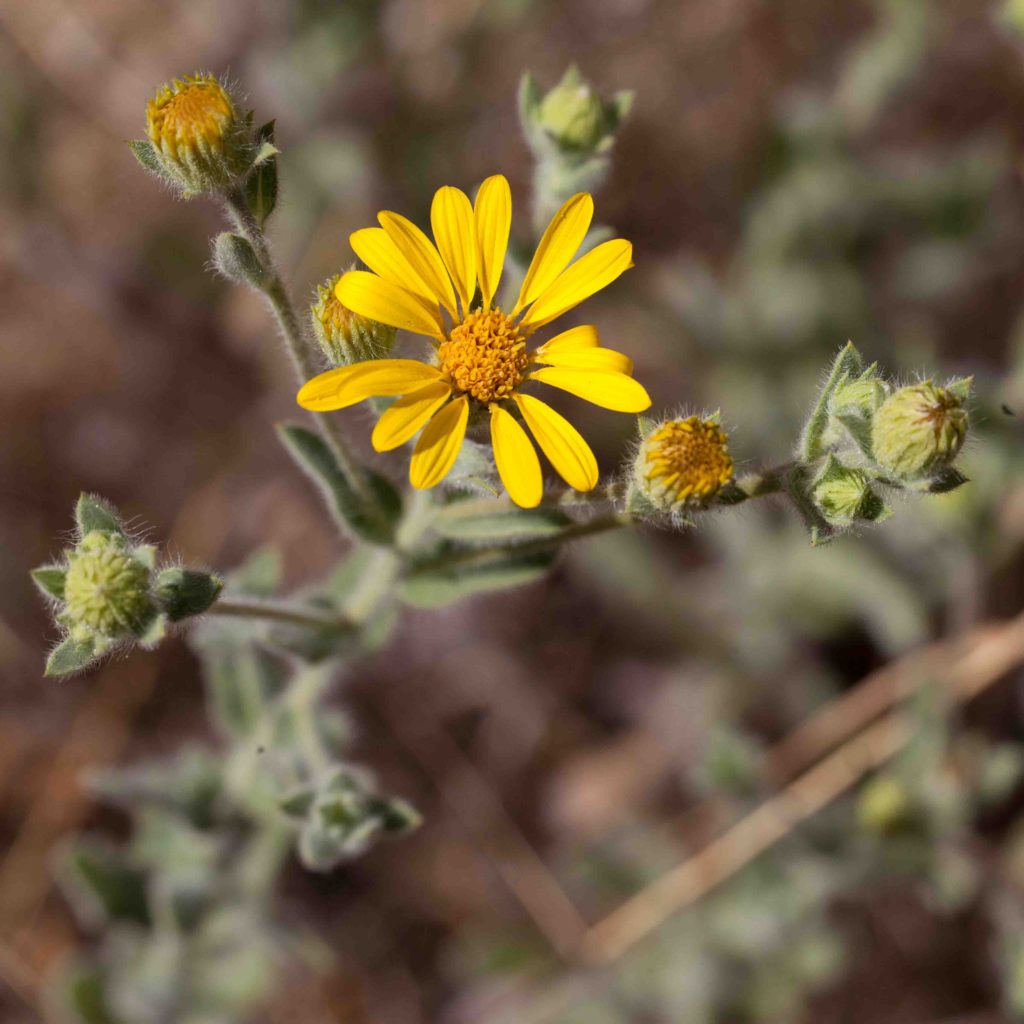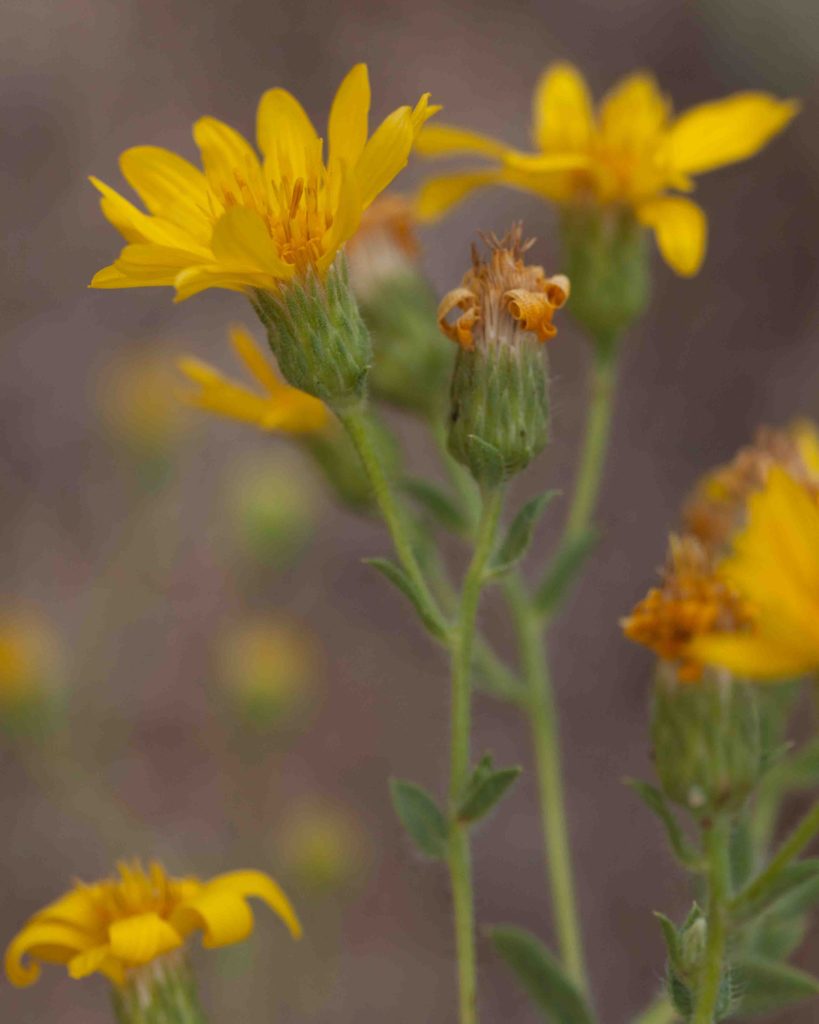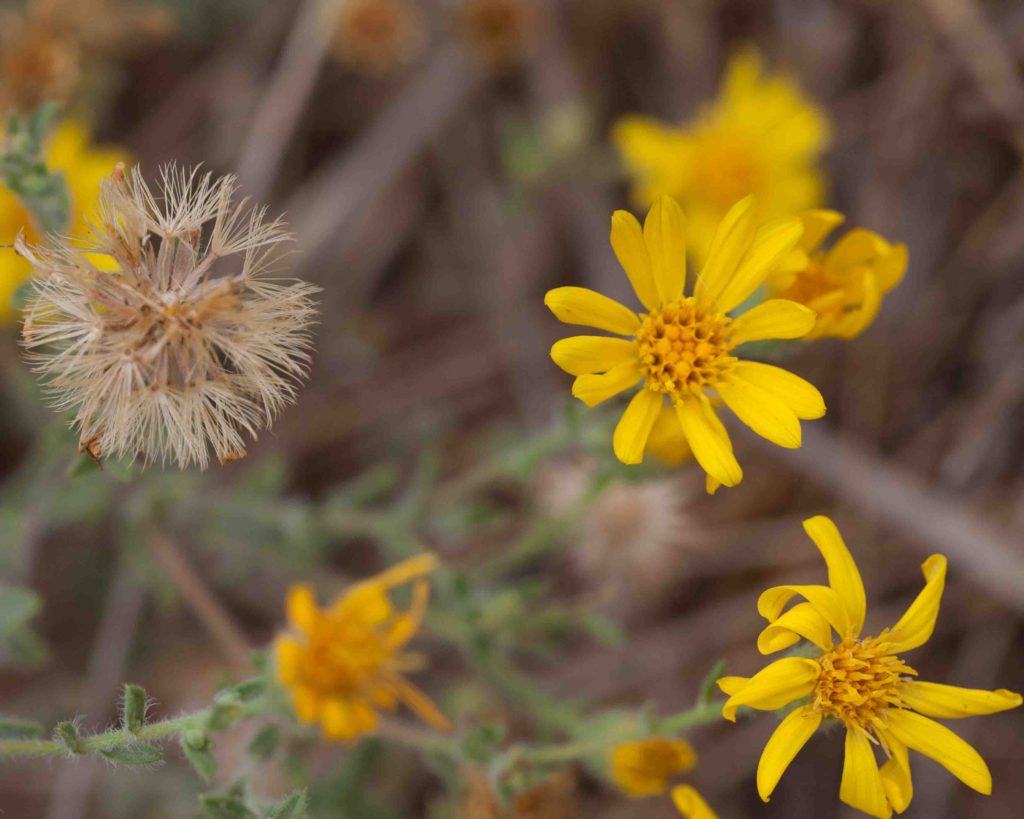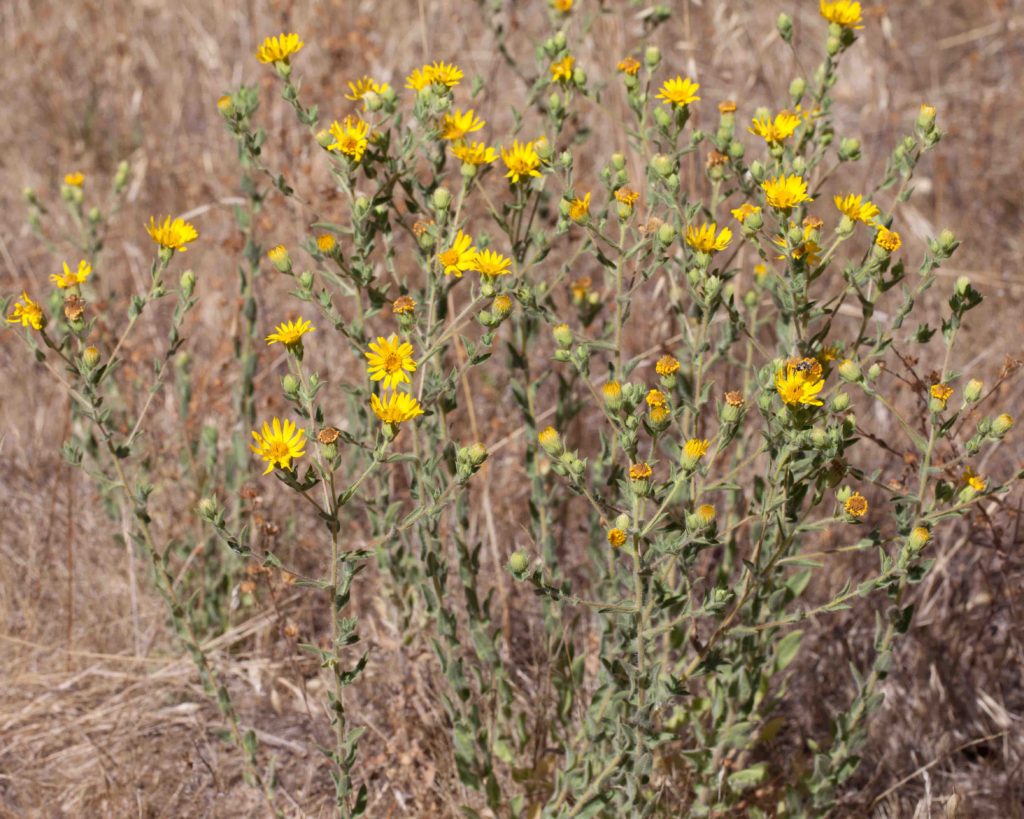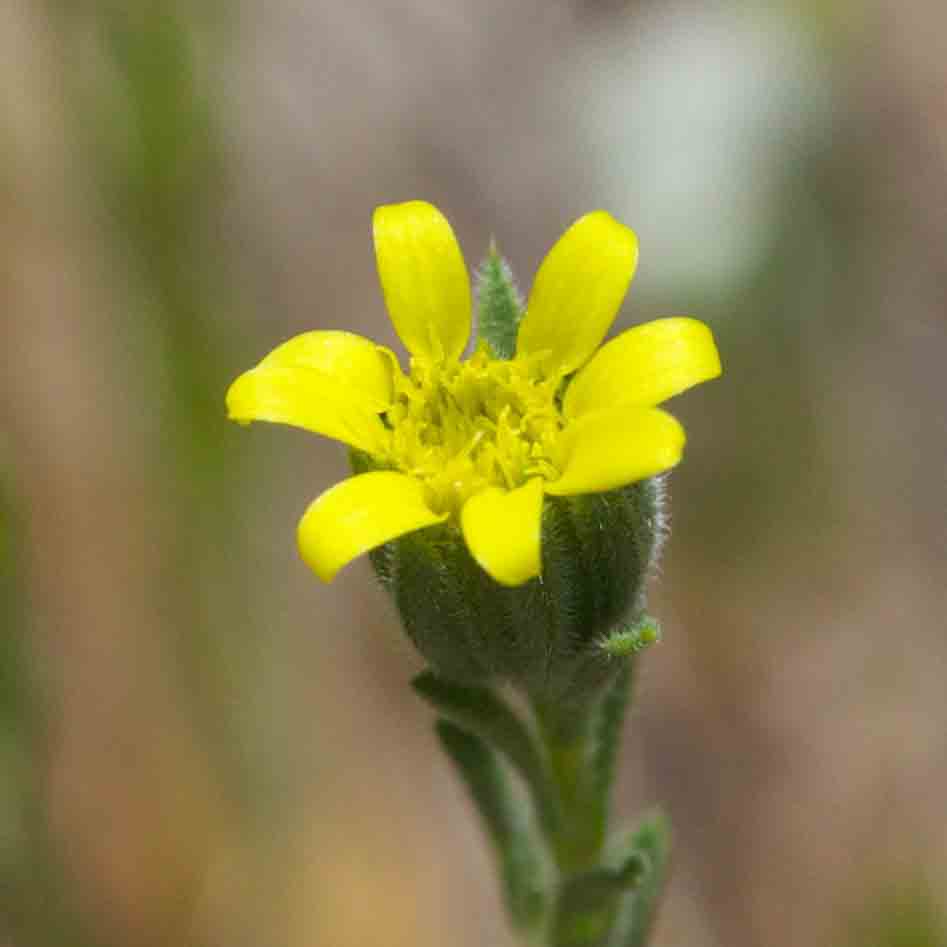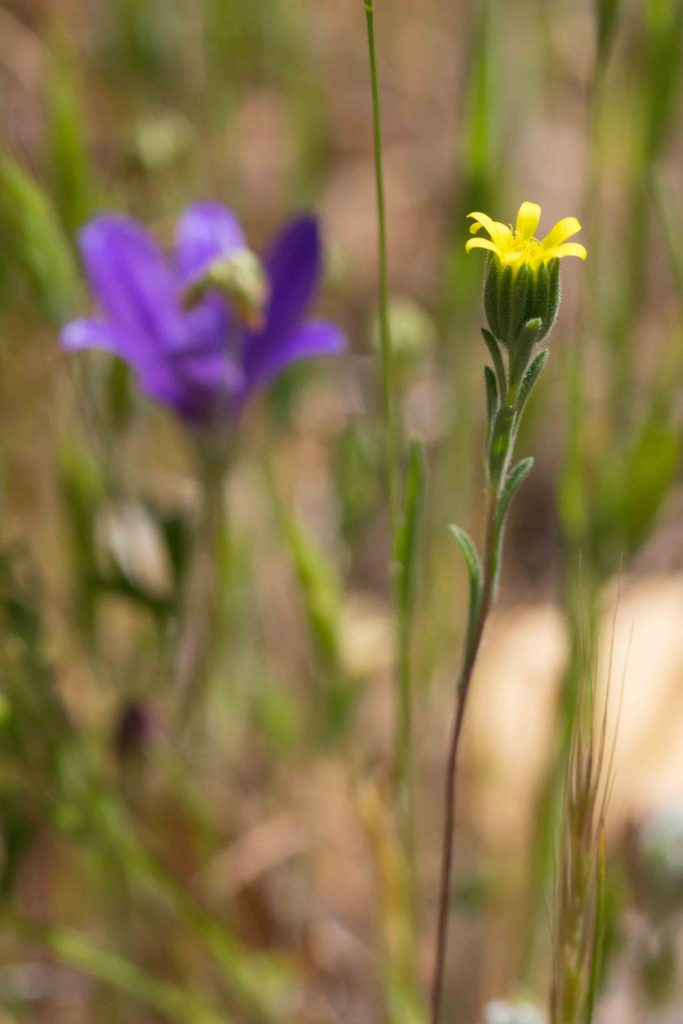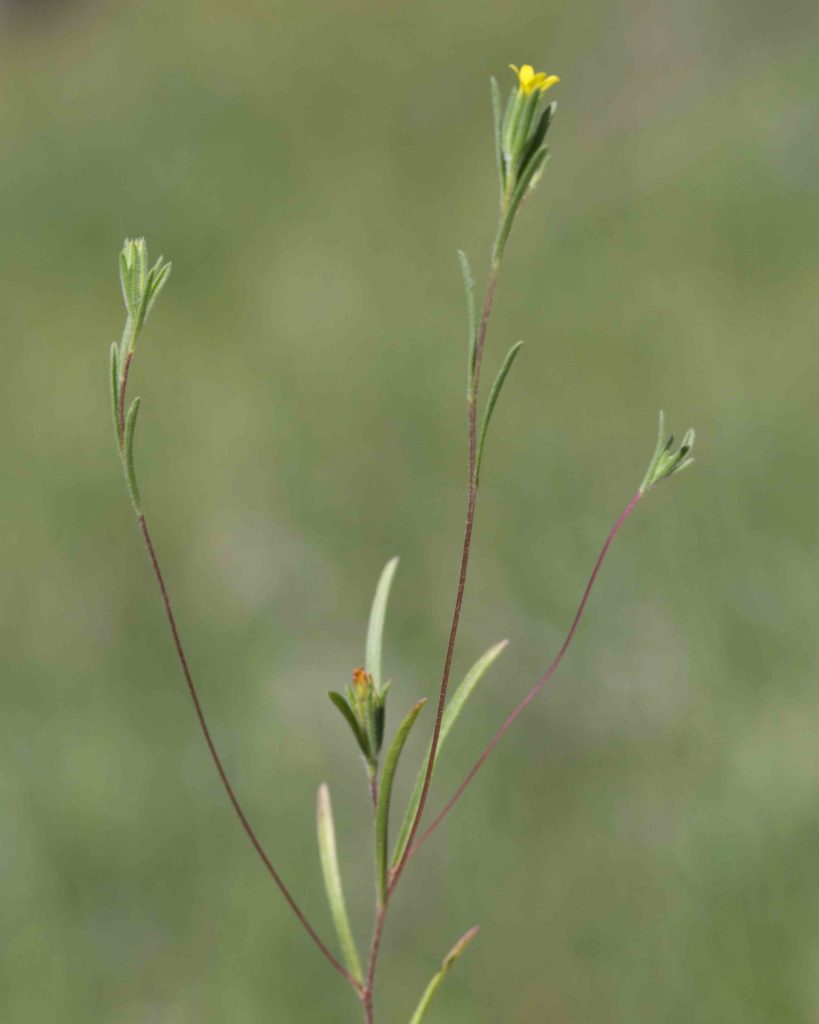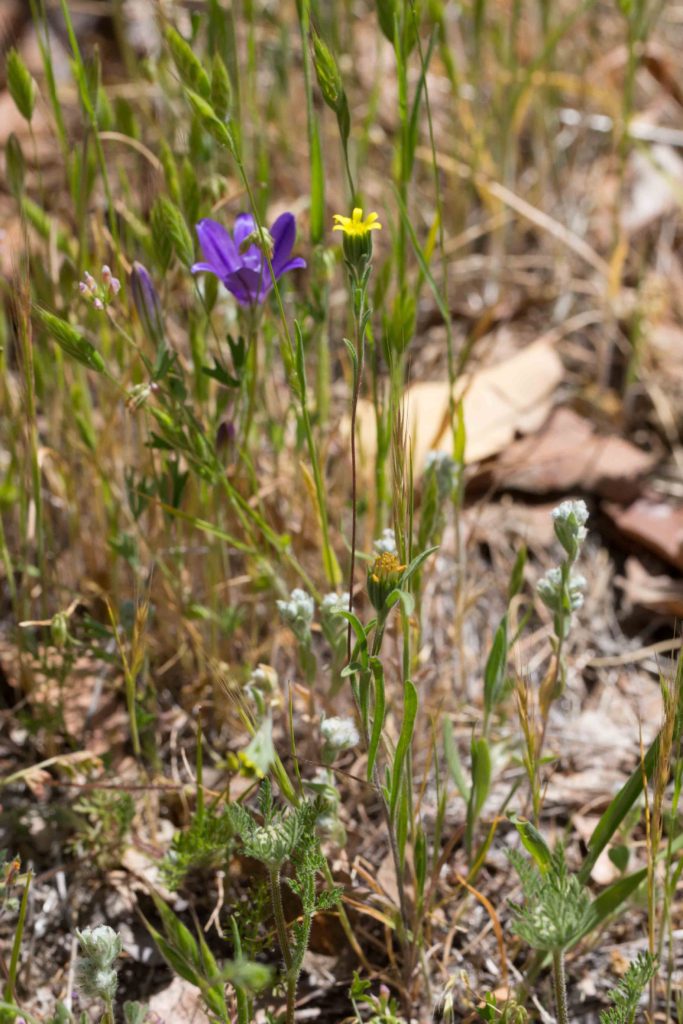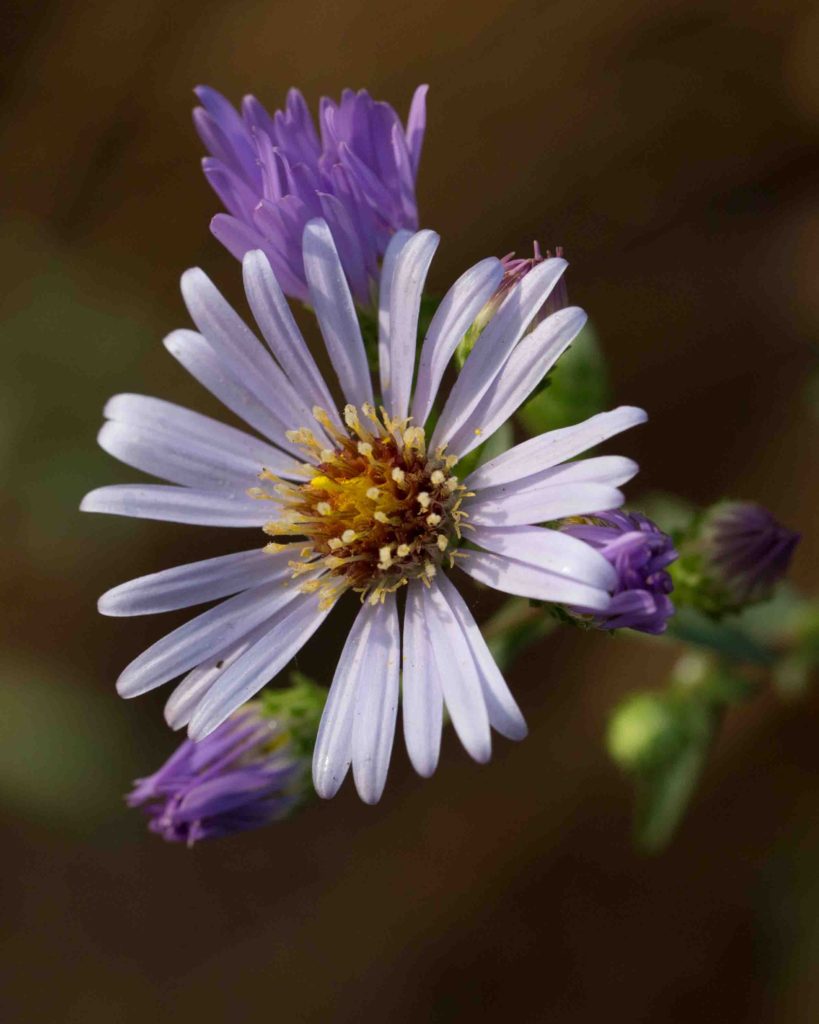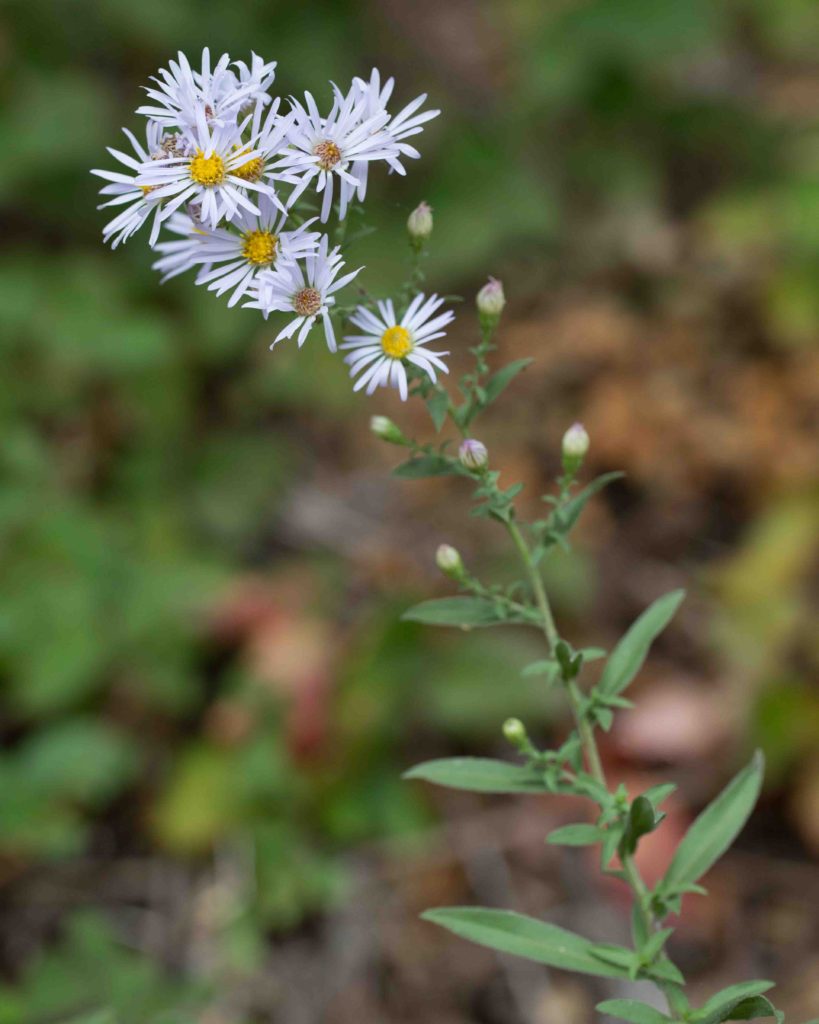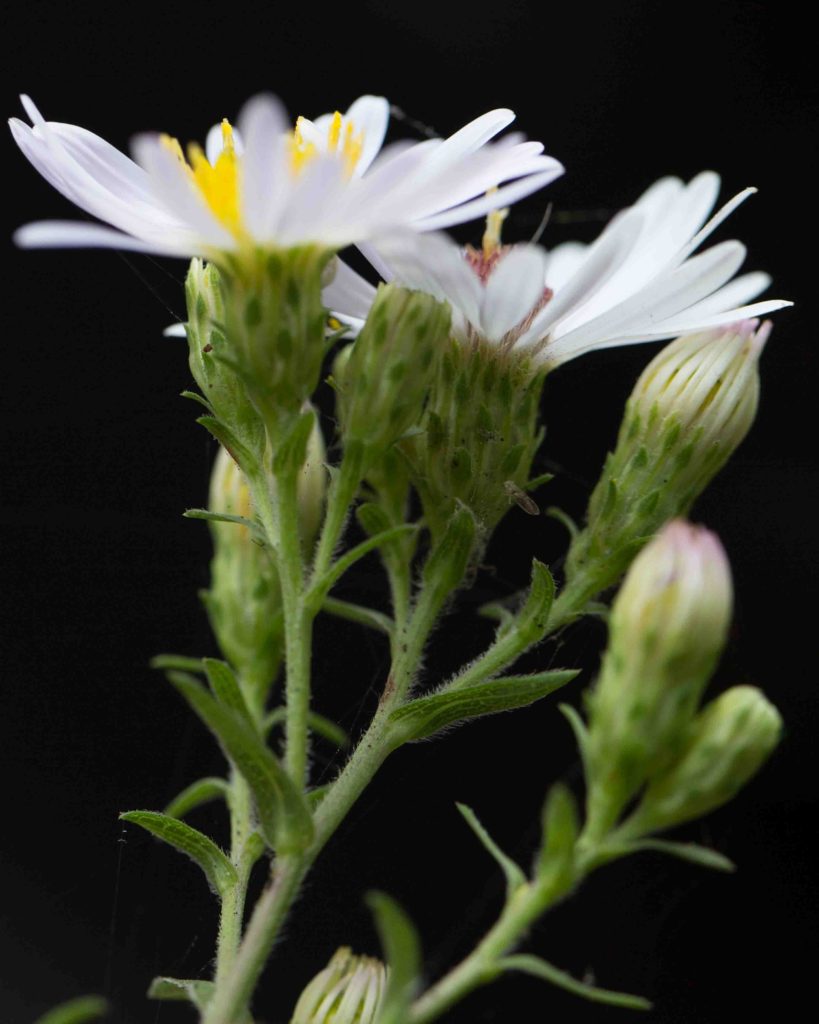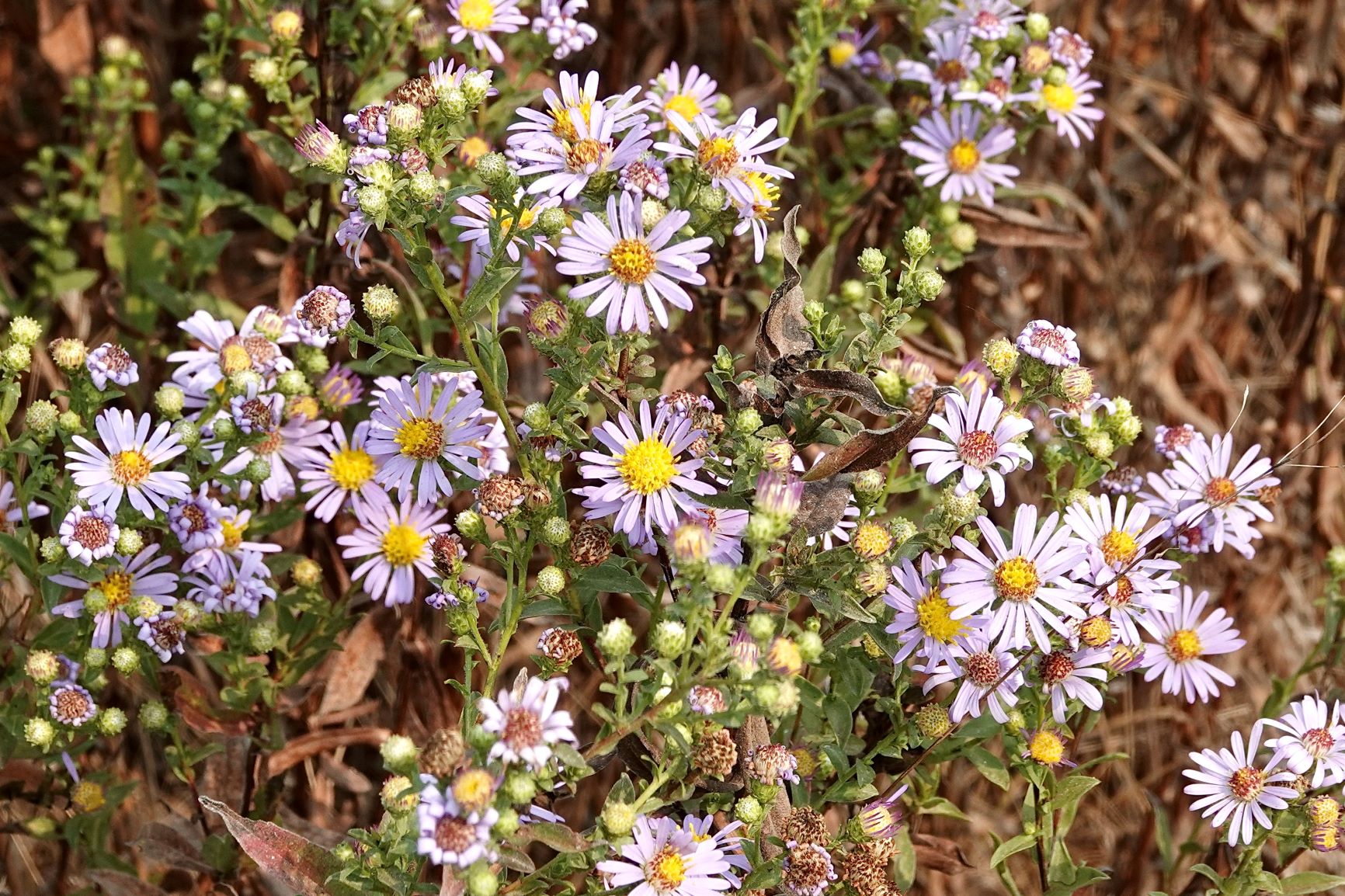Asteraceae: Sunflower Family – Astereae Tribe: various daisy-like flowers
The Sunflower family is a very large family with over 25,000 members. Botanists subdivide the family into a number of tribes, of which 14 are present in Monterey County. The Astereae (Aster tribe) includes a diverse range of plants, some of which have clearly daisy-like flowers and others, even if the same genus, which do not.
Benitoa – Benitoa occidentalis
Blooms:
June–Nov
Plant Height:
10–150 cm
Flower Size:
Medium
Origin:
Native
Rare or Endangered?
Yes – 4.3
Habitat:
Dry hillsides, inland
Notes:
Inflorescences have 5–8 ray flowers (5–7 mm long), with 9–20 disk flowers. Margins of the ray flowers may be rolled under. Stem is erect and much-branched. Involucre more or less cylindrical, tapered at the base. A key identifying feature is the phyllaries, in 5–8 series with a large stalked gland at the tip of each phyllary. Leaves are alternate, sessile, linear to oblanceolate and reducing in size towards the top of the stem. Endemic to the Diablo Range.
California Sand-aster – Corethrogyne filaginifolia
Blooms:
May–Dec
Plant Height:
10–100 cm
Flower Size:
Medium
Origin:
Native
Habitat:
Many, including coastal scrub, chaparral and grassland
Notes:
The flowers are similar to the California Aster (Symphyotrichum chilense, see below) but the grayish and woolly leaves and stems are very distinctive. There are 10–43 ray flowers, slightly shorter than those of the California Aster and varying in color from deep pink to almost white. Sometimes called California Beach-aster, but this is misleading since the plant is found in a number of habitats apart from beaches. Photo #4 by CJH.
Rough-leaved Aster – Eurybia radulina
Blooms:
July–Sept
Plant Height:
10–70 cm
Flower Size:
Medium
Origin:
Native
Habitat:
Dry forest floors & wooded slopes
Notes:
This plant produces flat-topped clusters of 10–15 long, strappy ray flowers, colored white to pale violet. Phyllaries are covered with short, soft hairs, with at least some having purple tips or margins. Leaves are 3–8 cm, ovate and coarsely-toothed, rough to the touch. Photos #2-3 by CJH.
Telegraph Weed – Heterotheca grandiflora
Blooms:
All year
Plant Height:
< 2 m
Flower Size:
Medium
Origin:
Native
Habitat:
Disturbed areas, dry streambeds, sand dunes
Notes:
Though this is frequently small and scruffy, it is at its best in late summer when it grows into a tall, slender plant with a leafy stem and numerous flower heads. Individual flower heads have 25–40 rays, 5–8 mm long, and 30–75 disk flowers. Fruits are in dandelion-like seedheads with tan-colored pappus. Locally very common. Photos #2-3 by CJH.
Bristly Goldenaster – Heterotheca sessiflora subsp. echioides
Blooms:
July–Oct
Plant Height:
30–75 cm
Flower Size:
Medium
Origin:
Native
Habitat:
Grassland, scrub, woodland & disturbed places
Notes:
Individual flower heads can be quite variable, with between 3 and 30 ray flowers, each 3–10 mm long. The stems and phyllaries are covered in dense white hairs, as are the flat, gray-green leaves. The inflorescences are not subtended by bracts, unlike those in the coastal subsp. sessiliflora. Fruits are in dandelion-like seedheads with a tan pappus.
Rigiopappus – Rigiopappus leptocladus
Blooms:
Apr–July
Plant Height:
10–30 cm
Flower Size:
Very small
Origin:
Native
Habitat:
Open grassy slopes, mainly in southern Monterey
Notes:
A very small flower, less than 2–3 mm in diameter with 3, 5, or 8 ray flowers. Its tiny size can be appreciated in the photo with a brodiaea flower in the background. The plant is very slender, slightly hairy and branched. It has long, thread-like stems, with peduncles extending beyond the main stem. Leaves are mostly cauline when the plant is in flower, oblanceolate to linear in shape.
California Aster – Symphyotrichum chilense
Blooms:
June–Dec
Plant Height:
40–100 cm
Flower Size:
Medium
Origin:
Native
Habitat:
Grassland & disturbed areas
Notes:
A common plant, with long-lasting flowers, pale pinkish-purple with comparatively long and slender ray flowers. The flowers may be confused with California Sand-aster (Corethrogyne filaginifolia, see above), but these ray flowers are longer and more slender. Also, this plant’s green foliage makes the identification straightforward. The flower heads are in cyme-like clusters and have 15–40 ray flowers, 8–12 mm long. Despite the scientific name, the plant does not come from Chile. Photo #4 by CJH.
